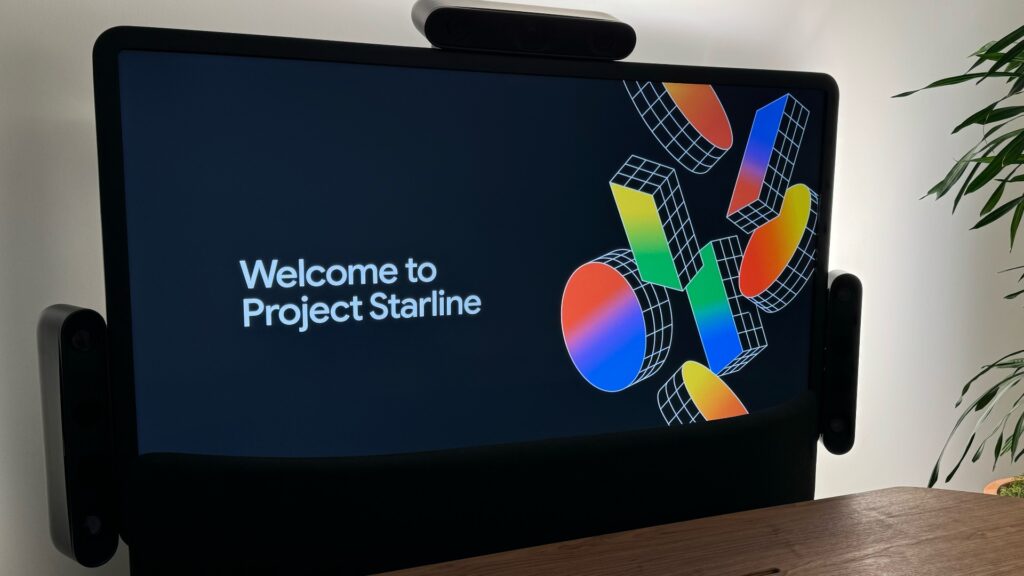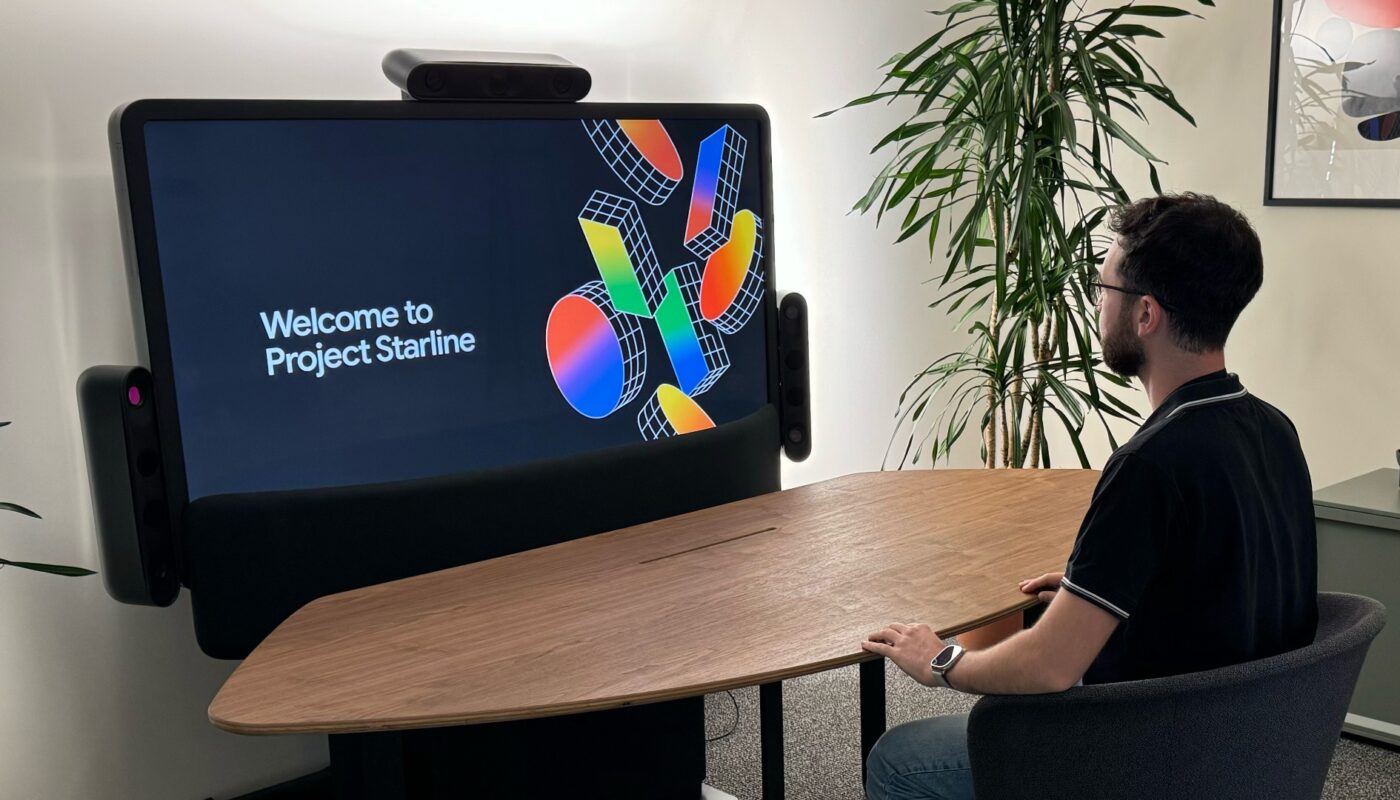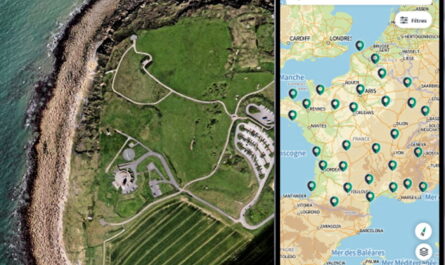Unveiled for the first time in 2021, the Starline project uses a giant 3D screen, usable without glasses, to give the impression that a person is in front of you. This is the most impressive holographic demonstration we’ve seen.
“Connecting human beings when they are not together”these are the words used by Google to define “Starline”, which it has been talking about regularly since 2021.
This project has a flaw: you have to see it to understand it. It is impossible to film it, since the holographic 3D screen is only visible when you sit in front of it. Numerama had the opportunity to try it during Google I/O and came away impressed and troubled, while being doubtful about its interest.
A depth of several centimeters, without any loss of quality
The Starline project is a kind of giant television surrounded by several cameras. Its concept is simple: it is used to make video and 3D calls. Each participant, regardless of their location on the planet, must have the device designed by Google to participate in a call.
Thanks to cameras and algorithms, Google reconstructs reality in 3D. His device uses an auto-stereoscopic screen capable of diffusing different light to each eye (he uses cameras to find the right orientation). We can thus see depth and relief without wearing 3D glasses or a VR headset.


As part of our demo, we spoke with a project manager located in a room behind the screen.
The first impression is very disturbing, since we would swear that our interlocutor is sitting right in front of us, as if the television was only a frame. You can easily see up to 50 centimeters behind it, with a perfect illusion when you move or stand up. To impress us even more, our correspondent handed us an apple. Miracle, his arm comes out of the screen.
To enhance the experience, Google is relying on a horizontal soundbar capable of replicating the direction of sounds. The feeling of holograms has never been so strong, with the ability to teleport someone into a screen. The visual quality too, although a little digital (there is a little noise), is good enough not to detract from the demo. We are very far from a Nintendo 3DS.
Will the Starline project ever be used?
Why relaunch Starline in 2024? Because Google has just announced that HP, as a partner, will start marketing it. The first multinationals could soon equip themselves to carry out remote exchanges without using Google Meet or Zoom.
Even if the demonstration is astonishing, it is difficult to come away completely convinced. Firstly because the hardware is likely to be very expensive and takes up a lot of space, then because the constraints of a 2D video call, with a webcam and a computer, are not sufficiently problematic to justify such a technological transformation . The emergence of virtual reality headsets, from Meta or Apple, also makes 3D exchanges possible, but no one really uses them for that. We can also wonder if meetings with several people would really be possible with Starline, since a group of 10 people would not fit on the screen.
While Starline itself is unlikely to become the norm in offices, the technologies Google uses could help it develop interesting products. The brand achieves the feat of modeling an individual in 3D by relying solely on video streams from RGB cameras, without LiDAR or infrared sensors. Its algorithms, in a VR headset, on a computer or in a video game studio, within a few years, could make the modeling of a human body much more authentic. It remains to be seen whether video calls will benefit from this.
Do you want to know everything about the mobility of tomorrow, from electric cars to e-bikes? Subscribe now to our Watt Else newsletter!



